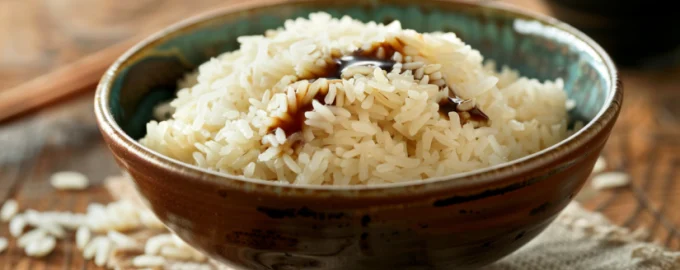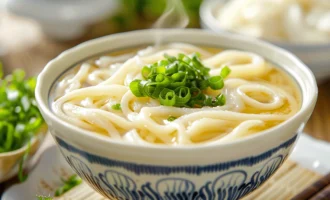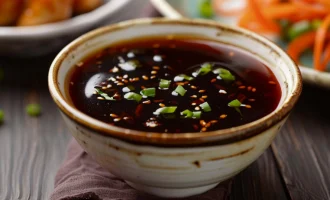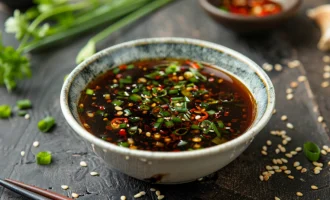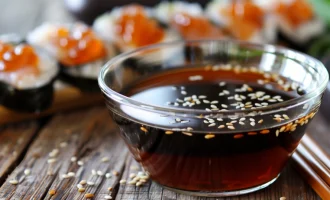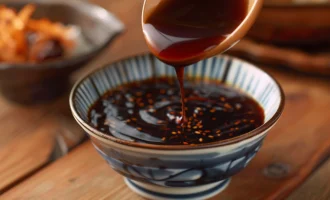Rice with soy sauce is a simple yet flavorful dish that epitomizes the essence of Asian cuisine, where rice is a staple food and soy sauce is a fundamental condiment. Soy sauce, with its origins in China over 2,500 years ago, has become indispensable in various Asian cooking traditions, known for its rich, umami flavor. This recipe brings together the comforting texture of rice with the deep, savory notes of soy sauce, creating a dish that’s both versatile and satisfying. It can serve as a base for stir-fries, a side for grilled meats or vegetables, or a simple meal on its own, perhaps with some added vegetables or protein.
- White rice 200 g
- Water 400 ml
- Soy sauce 30 ml
- Sesame oil 1 tablespoon
- Green onions 2 pinch
- Garlic 2 cloves
- Salt a pinch
- Rinse the rice under cold water until the water runs clear. Combine the rinsed rice and 400 ml of water in a pot. Bring to a boil, then reduce the heat to low, cover, and simmer for 18-20 minutes, or until the water is absorbed and the rice is tender. Remove from heat and let it sit, covered, for 5 minutes.
- While the rice is cooking, in a small bowl, mix together the soy sauce and sesame oil. Set aside.
- Heat a small amount of sesame oil in a skillet over medium heat. Add the minced garlic and chopped green onions, sautéing until fragrant, about 1-2 minutes. Be careful not to burn the garlic.
- Fluff the cooked rice with a fork and then add it to the skillet with the garlic and green onions. Pour the soy sauce mixture over the rice and stir to combine everything evenly. If desired, adjust the seasoning with a pinch of salt, but remember that soy sauce already adds saltiness.
- Serve the rice warm as is, or as a side dish to your favorite protein or vegetables.
Storage Tips
Store any leftovers in an airtight container in the refrigerator for up to 3 days. Reheat in the microwave, adding a splash of water if needed to prevent the rice from drying out.
Useful Properties of the Main Ingredient
Soy sauce is not just a flavor enhancer; it also contains some nutritional benefits. It’s a good source of trace minerals, including magnesium, phosphorus, potassium, and selenium. Soy sauce also contains antioxidants and has been shown to offer some digestive benefits due to the fermentation process it undergoes.
Interesting Facts about the Sauce
- Aged Complexity: Some premium soy sauces are aged for years, much like fine wines, developing complex flavors and aromas.
- Global Staple: While soy sauce originated in China, it has become a staple ingredient in kitchens around the world, used in a variety of cuisines beyond just Asian cooking.
- Fermentation Process: Traditional soy sauce is made through a fermentation process that can take months to complete, involving the careful cultivation of molds, yeasts, and bacteria to achieve its unique flavor.
Rice with soy sauce is a humble dish with deep cultural roots, showcasing the profound flavors that can be achieved with minimal ingredients. It’s a testament to the culinary tradition of making the most out of staple ingredients, creating dishes that are both nourishing and delicious.

